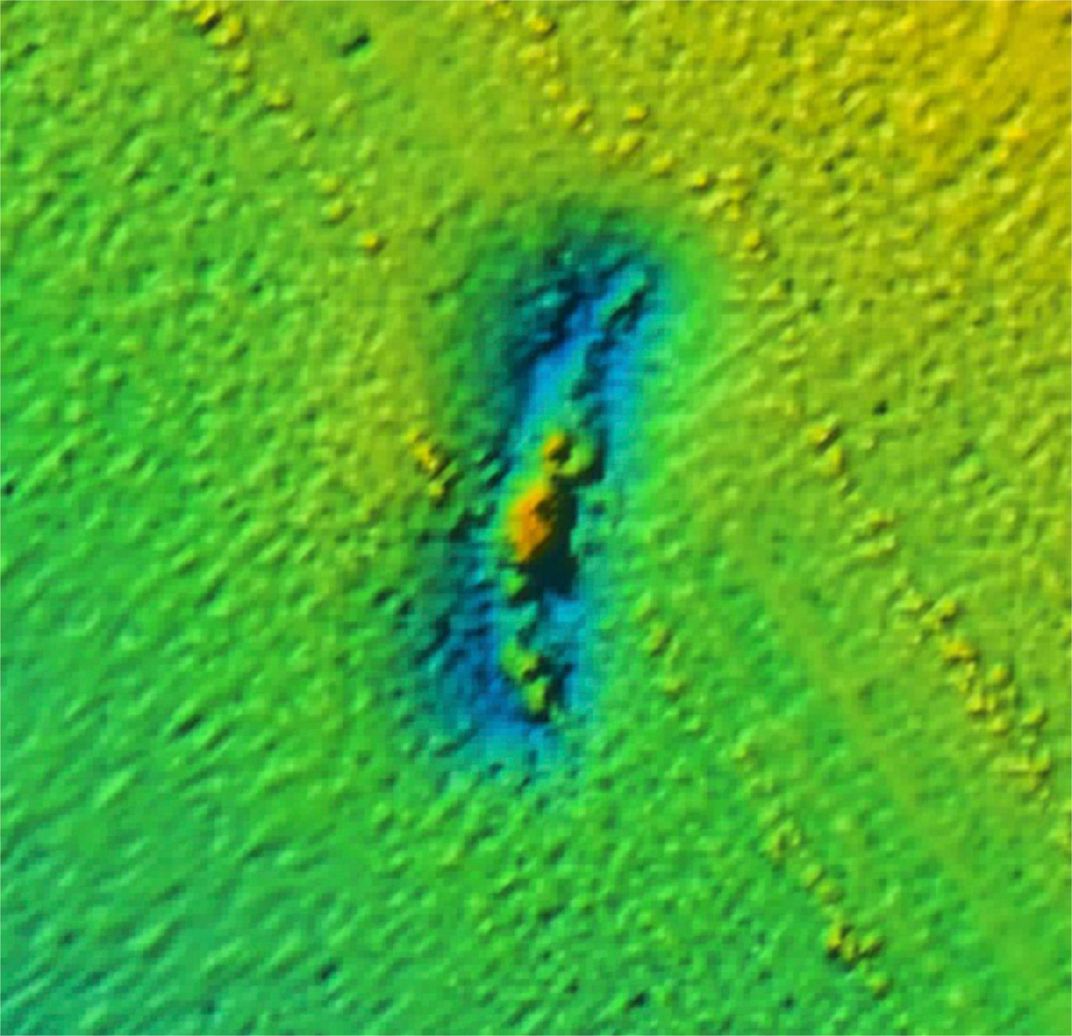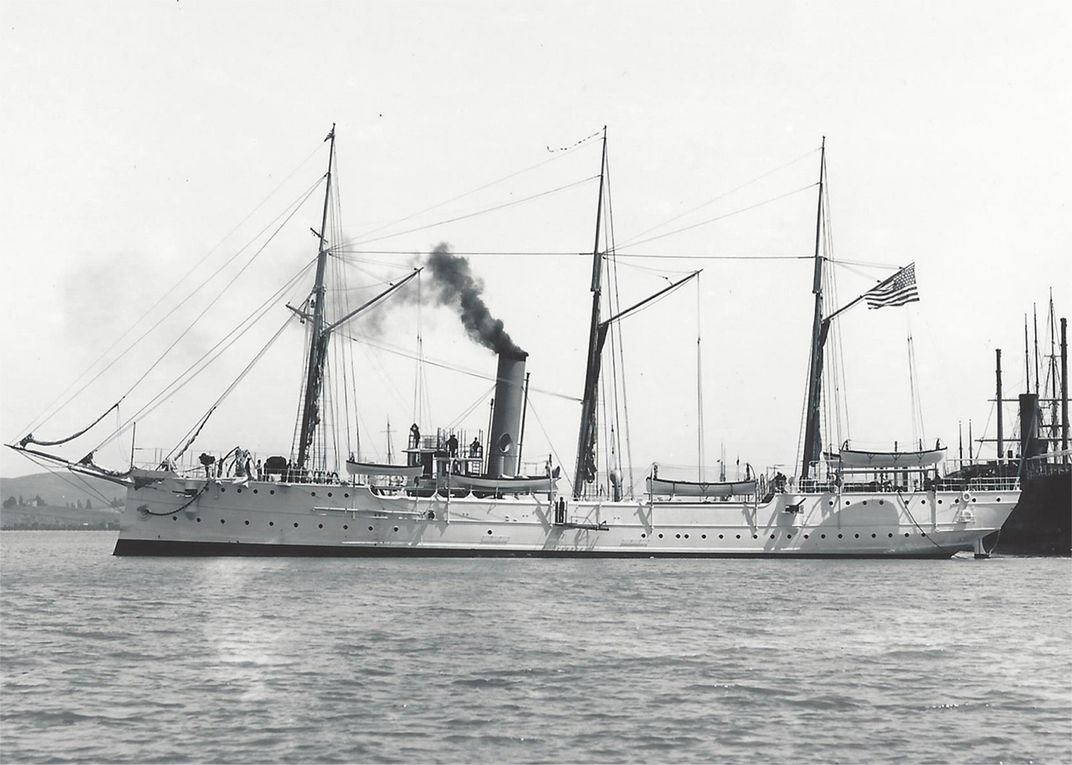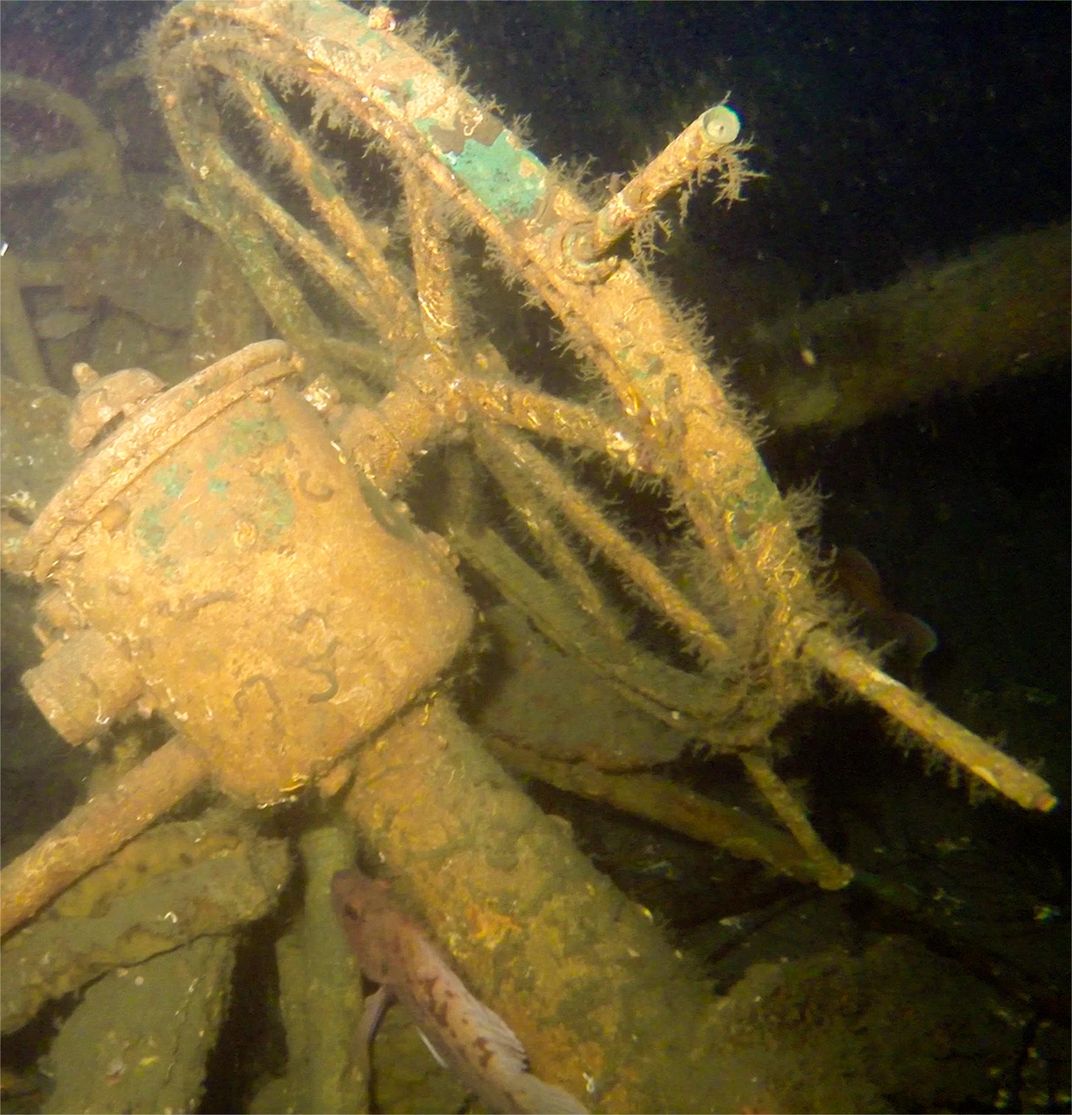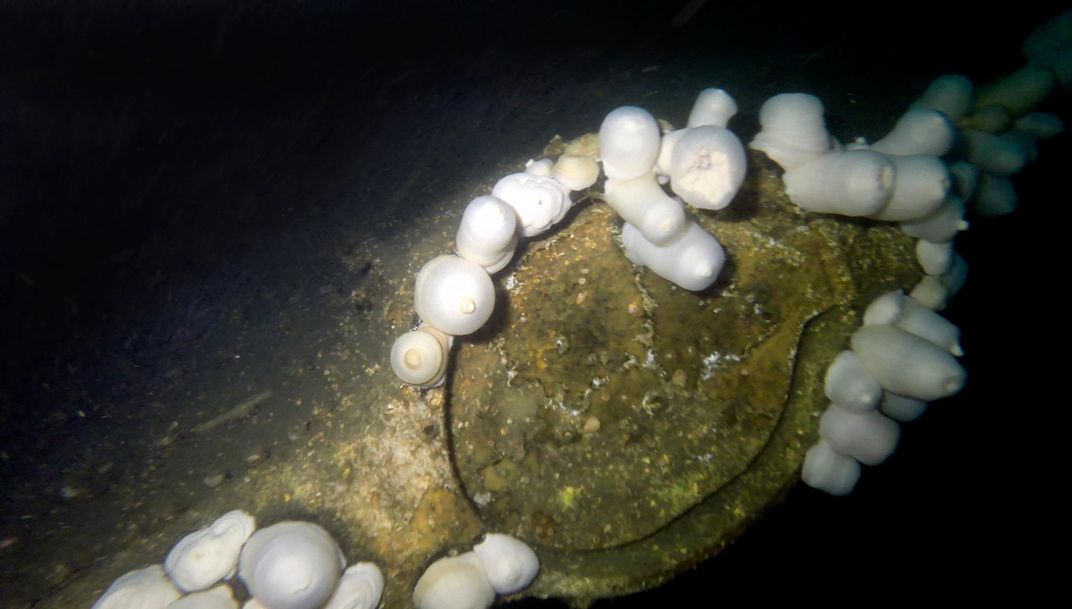A Century After Sinking, This Storied Ship Will Remain Underwater
The McCulloch was the largest cutter of its day and sank in 1917 after colliding with a passenger ship in heavy fog
In October 2016, the National Oceanic and Atmospheric Administration and Coast Guard decided to conduct a joint training exercise off the California coast. According to Megan Gannon at LiveScience, previous surveys of the area had indicated the legendary Coast Guard cutter McCulloch might have been sunk there. So, using a specially designed wreck-hunting remote operated vehicle, the team looked for its remains.
They found the skeleton of the ship covered with anemones. But they held off touting the discovery.
Last week, on the 100th anniversary of the sinking of the ship, the agency finally announced that it had discovered the wreck of the ship, reports Linda Wang at the Associated Press. “[W]e decided it would be a fitting tribute to the ship and her crew to wait and make the announcement June 13,” Dan Dewell, a public affairs officer with the Coast Guard, tells Gannon.
According to a Coast Guard press release, the ship has a long and storied history. Commissioned in 1897, when it was built it was the largest cutter in the fleet of the Coast Guard’s predecessor, the U.S. Treasury’s Revenue Cutter Service. According to Gannon, it cost over $200,000, and was armed with four 6-pounder, 3-inch rapid firing guns and one 15-inch torpedo tube.
Those armaments served it well during the Spanish-American War. In 1898, the cutter was part of the U.S. Asiatic Squadron, which destroyed the Spanish fleet in Manila Bay. After the war, the ship was stationed out of San Francisco and patrolled the entire Pacific coast of the U.S. from Mexico to Cape Blanco, Oregon. It even served in Alaska’s Pribilof Islands, where it enforced seal-hunting regulations and served as a floating courthouse for coastal settlements.
With the outbreak of World War I, the Navy took command of the McCulloch. On June 13, 1917, in heavy fog, it collided with the passenger steamship SS Governor. Luckily all of McCulloch's crew was able to escape to the Governor, though one crewman who was injured during the accident died from his injuries a few days later. Wang reports it only took 35 minutes for the ship to sink 300 feet to bottom of the ocean.
Though the decks of the ship are gone, the ROV team was able to positively ID the cutter using images of the vessel published in 1914. Its 11-foot bronze propeller, guns, torpedo tube and boilers were conclusive evidence that the ship was the McCulloch.
“McCulloch and her crew were fine examples of the Coast Guard’s long-standing multi-mission success from a pivotal naval battle with Commodore Dewey, to safety patrols off the coast of California, to protecting fur seals in the Pribilof Islands in Alaska,” Rear Admiral Todd Sokalzuk, commander of the 11th Coast Guard District, says in the press release. “The men and women who crew our newest cutters are inspired by the exploits of great ships and courageous crews like the McCulloch.”
There are no official plans for what to do with the wreck next, but legally it is still property of the U.S. government, and it’s illegal for anyone to disturb the ship—with the exception of the odd sea anemone.



